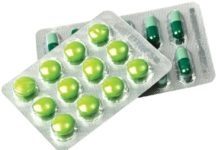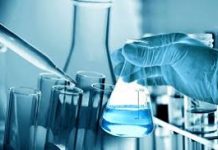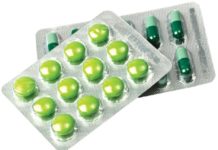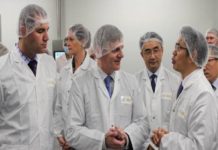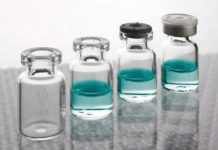Water is an integral part of human body; likewise it is also inseparable when it comes to pharmaceutical industry. It as an essential raw material used for the manufacture of dosage forms either directly (as a vehicle or solvent) or indirectly (for cleaning equipment).
Why to make water suitable for pharmaceutical purpose?
Water because of it’s tastelessness and lack of pharmacological activity is a brilliant ingredient for most of the dosage forms. But raw water due to it’s chemical property of polarity and hydrogen bonding is acceptable to many compounds, hence it is associated with contaminants like minerals, ions, particles and microbes. This water cannot be utilized directly in the pharmaceutical preparations as it can directly impact the stability of the formulation, therefore purification of raw water is required to minimize the contents to an acceptable level to make it suitable for pharmaceutical purpose.
How to purify water to make it suitable for pharmaceutical purpose?
Before making water fit for usage in pharmaceutical dosage forms it is mandatory that it should follow certain minimal chemical and microbiological standards as set up by National Primary Drinking Water Regulation (NPDWR) by US Environmental Protection Agency (EPA) or drinking water regulations by European Union or Japan, or drinking water guidelines by WHO. It is the responsibility of manufacturer to design the water system such that it meet the requirements according to the type of formulation prepared at the unit.
There are numerous treatment steps to obtain different types water according to their purpose in pharmaceutical plant. These are as follows:

Raw water derived from borewell source is converted to water for drinking purpose. General procedure adopted by manufacturer to meet the specific requirements include: Pre-chlorination (to remove algae and preventing further growth), Desalinization (to reduce salt content), Filtration (to remove particles), Softening, Disinfection (by sodium hypochlorite injection to kill colony forming bacteria), Ferrous removal (aeration done to remove iron) , precipitation (removal of suspended solids), reduction of organic and inorganic content. After obtaining water for drinking purpose it is further subjected to following treatment steps:
- Pre- Filtration: Granular or cartridge filters are utilized to perform pre filtration. Their function is to remove any solid particles from the supply of the water which will not only produce water free from contaminants also it will prevent the clogging of the components in the downstream of the water system. Therefore it is mandatory to maintain them to make system operate efficiently. The filter size range from 5-50 microns and they are arranged in a pattern of biggest pore size to the least pore size to eliminate all the consequences of contaminants.
- Softening: This is used to remove the hardness of the water which is due to Calcium and magnesium ions. These are ions are combined with bicarbonates,suphates or chloride ions which are removed by the ion- exchange resin method. It consist of two bead filled polystyrene beds. In the first bed the cations get exchanged with Hydrogen ions and in the second bed the anions get exchanged with hydroxyl ions. Water softner resin beds are regenerated with Sodium chloride solution (Brine).
- Dechlorination and Deammonification: It is done by adsorption phenomenon by using activated carbon or granular activated carbon (12 x 40 mess size). It is based upon empty bed contact time (EBCT). If only chlorine is to be removed than it requires lesser time as compared to chloramines.
- Organic Scavenging and De-ionization: Organic Scavenging devices utilize macromolecular anion exchange resins capable of removing organic material and endotoxins from the water. They can be regenerated by using biocidal caustic solutions. De-ionizers are used to remove dissolved solids from the feed water. They are designed to remove cations and anions to improve the chemical attributes of the water. In this cation resin beds remove -vely charged particles whereas anion beds will remove +vely charged particles. Cationic resins are regenerated with either hydrochloric solution or sulphuric acid which replace the captured positive ions with hydrogen ions . Anionic resins are regenerated with sodium or potassium hydroxide which replace the captured negative ions with hydroxide ions.
- Reverse Osmosis: These units utilize a semi-permeable membrane and have substantial pressure differential that will make water drive through the membrane to obtain chemical, microbial and endotoxin quality improvement. It will have three portions supply of water, product water permeation and waste water (reject). The membrane size, design and integrity, seal integrity, fouling, sensitivity to bacteria all are considered before operations. Generally membrane filter used is of 0.2 micron in size to trap the bacteria but in reverse osmosis the main purpose is to eliminate all the viruses and bacteria hence pore size of membrane is 0.0001 micron.
- Distillation: This process kills bacteria, deactivate endotoxin and removes dissolved solids not removed by de-ionizers and RO units. The units provide microbial purification through thermal vaporization, mist elimination and condensing. The designs for such systems available include single effect, multiple effect and vapor compression. Multiple effect and vapor compression systems have high generating capacity and efficiency therefore it is used for larger systems.
- Ultra filtration: This technology uses permeable membrane to remove macromolecular and microbial impurities such as Endotoxins. Such filtration is kept as an intermediate or for final purification. The system design contains all the parameters that concerned with the membrane filter because it is the main component.
- UV Light: It has basically two important uses in the water treatment system. The most common application is surface dis-infection and they are also used to remove ozone from ozone process water systems. The most biocidal wavelength is 254 nm. Most commonly mercury vapor lamps are used as UV light source. The ultraviolet dose must be sufficient enough to kill the bacteria. Placing of UV light is really important as intensity of UV lamp decreases with the square of the distance from the light source.
Depending upon the location and type of formulation prepared at a particular manufacturing plant the water system is designed and treatment steps are set up accordingly to get the desired quality of water. Depending on the water treatment steps different grades of water is obtained which is categorized in USP 37 as follows:

People Also Read:
Reverse Osmosis System for Water Purification in Pharmaceuticals

